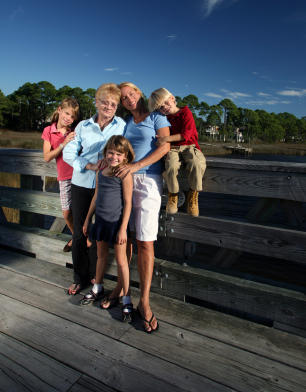
In the dark days following the Sept. 11, 2001, terrorist attacks on New York City and Washington, D.C., when traveler anxiety hit previously unknown levels, there developed among tourism marketers a new emphasis on targeting what was then called the “drive” market. During a time when formerly fearless flyers were concerned that airport delays could add hours to their trip or that there might be another attack on the nation’s air passenger system, a new sort of traveler’s calculus evolved: Would it be quicker to make a trip of 500 miles or less by simply driving to the destination rather than allowing the extra two to three hours for airport security that the airlines and the FAA recommended?
Today, with the unpleasantness of air travel at what’s perceived to be an all-time high, many of the post-9/11 circumstances seem to be upon us once again. Now, though, with gasoline prices also setting historic highs, it is no longer advisable to refer to something called the “drive” market. Instead, the term of the moment in the travel and tourism industry is the “in-state” market, the idea that people are less likely to travel by air and would prefer vacationing closer to home, giving us this past summer’s buzziest buzz word in travel, the “staycation.” For harried destination marketing professionals, anxious to keep the hotel rooms in their cities occupied, giving some thought as to whether this trend is one that will pass quickly or not is certainly worthwhile. Here are some things to consider:
- A recent poll commissioned by the Travel Industry Association (TIA) indicated that 41 million airline trips were avoided during the past year by passengers not because the fares were too high, but because air travel has become too inconvenient. The TIA estimated that the trips that were avoided represent a $26 billion loss in consumer spending, including $4.21 billion in federal, state and local taxes that would have been collected. Most observers agree that the airlines’ current proclivity toward nickel and diming passengers with nuisance fees to compensate for higher jet fuel prices is unlikely to make passengers more inclined to fly to their destinations.
- At the annual meeting of Destination Marketing Association International in late July, several sessions touched on the necessity of destinations to work with local attractions not typically considered tourist attractions—such as farmers’ markets, central business districts and seasonal and cultural festivals—in a way that will prompt locals to spend what would normally be their travel budgets in their own hometowns. Interestingly, the most recent TIA/Ypartnership TravelHorizons survey indicated that among travelers expecting to take vacations in or near their hometowns, 22 percent planned to stay in a hotel, motel or resort.
- These developments fit with what urban policy expert Joel Kotkin calls the “new localism,” the trend toward people becoming less geographically mobile than at any time since the advent of commercial aviation. According to Kotkin, high energy prices and an increased concern regarding environmental impact are causing more people to seek recreational and cultural experiences that are closer to home. And Kotkin, who’s writing a book on the subject, believes this is a long-term trend that will continue to grow between now and the year 2050.
While no one is predicting the immediate demise of long-haul domestic or international air travel, it does make sense for destination marketing professionals to consider recalibrating their marketing efforts with these new realities in mind. As always, the best advice is to maintain an approach that balances a destination’s marketing efforts between the most sought-after visitors and the visitors that the destination is most likely to attract.
This is an approach that assures a destination that even if the city-wide conventions they covet do not materialize, hotel rooms and convention centers can still be filled with the multitude of meetings and events organized by groups that are local, state and regional in scope. For the majority of cities that can only dream of hosting a once-in-a-lifetime Super Bowl or the Olympic Games, there are countless youth and amateur sporting events that generate millions of hotel room nights year in and year out. Setting a course that is mindful of the healthy volume of business available in a destination’s own backyard is the natural hedge against the larger phenomena that seem to be developing and over which the typical destination marketing executive has very little control.
Timothy Schneider is the president & CEO of Schneider Publishing, the Los Angeles-based company that publishes Association News and SportsTravel magazines and organizes the world’s largest conference for the sports-event industry called TEAMS: Travel, Events And Management in Sports. TEAMS 2008 will be held October 21-25 in Pittsburgh. The group travel markets served by Schneider Publishing generate 106 million hotel room nights annually. For additional information, please visit www.SchneiderPublishing.com or call toll-free (877) 577-3700.













Travel fees get worse..
Nowadays, most people prefer to have vacation at their home than traveling. Why? Because, aside from the hassle that they might encounter when traveling, it can be costly since travel fees today get worse. These days, if you're taking a flight for a trip any longer than overnight, it will cost a lot of money to check a bag, and if you want something to drink on the airplane or maybe a snack – get a second mortgage. Travel fees get worse every year. They'll even charge you for the sordid and unsanitary pillow and blanket. Travel fees get worse every year. It's gotten to the point where you need debt consolidation from travel fees for a trip over the weekend.